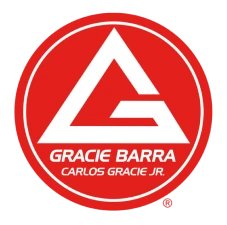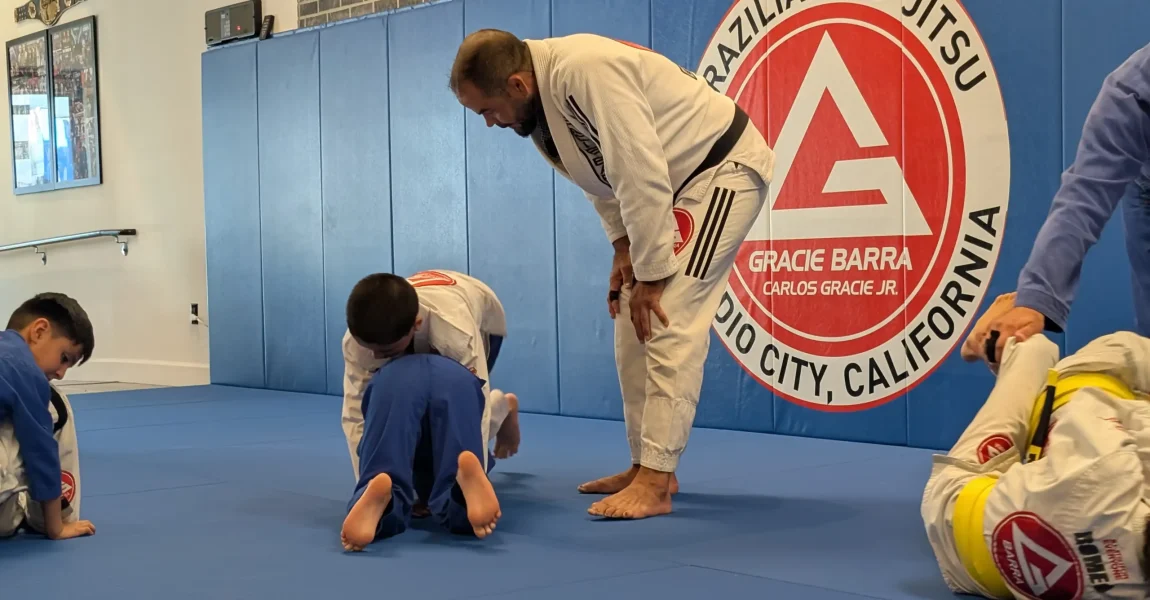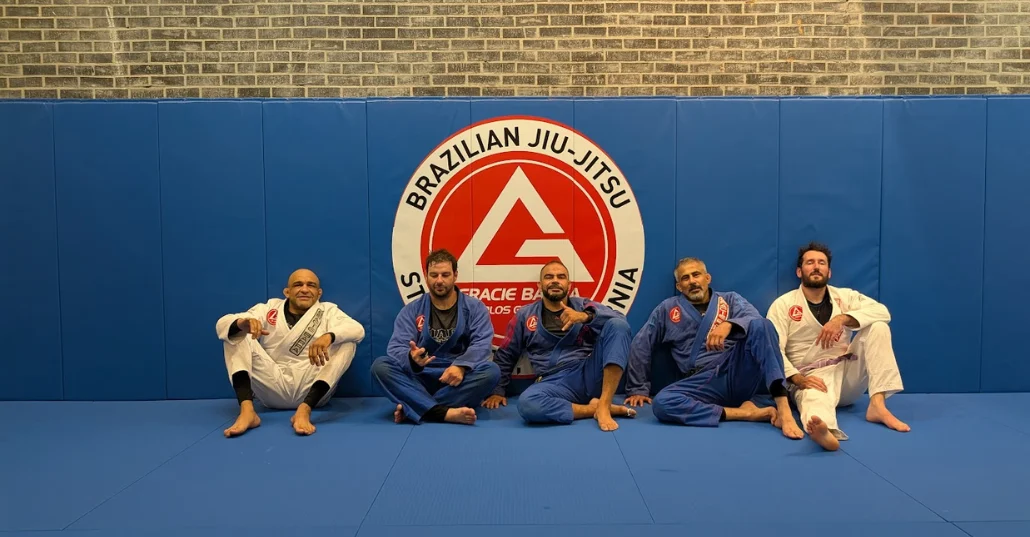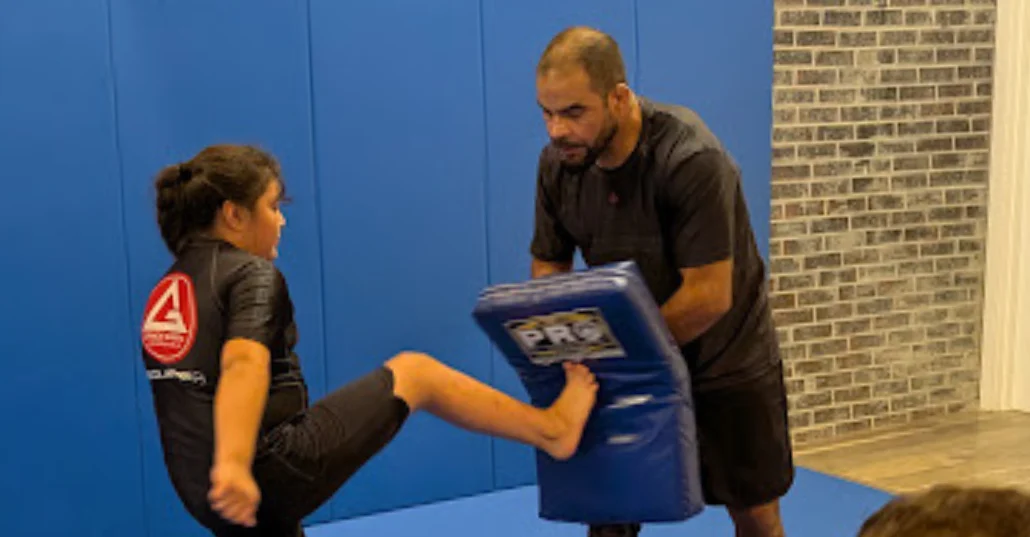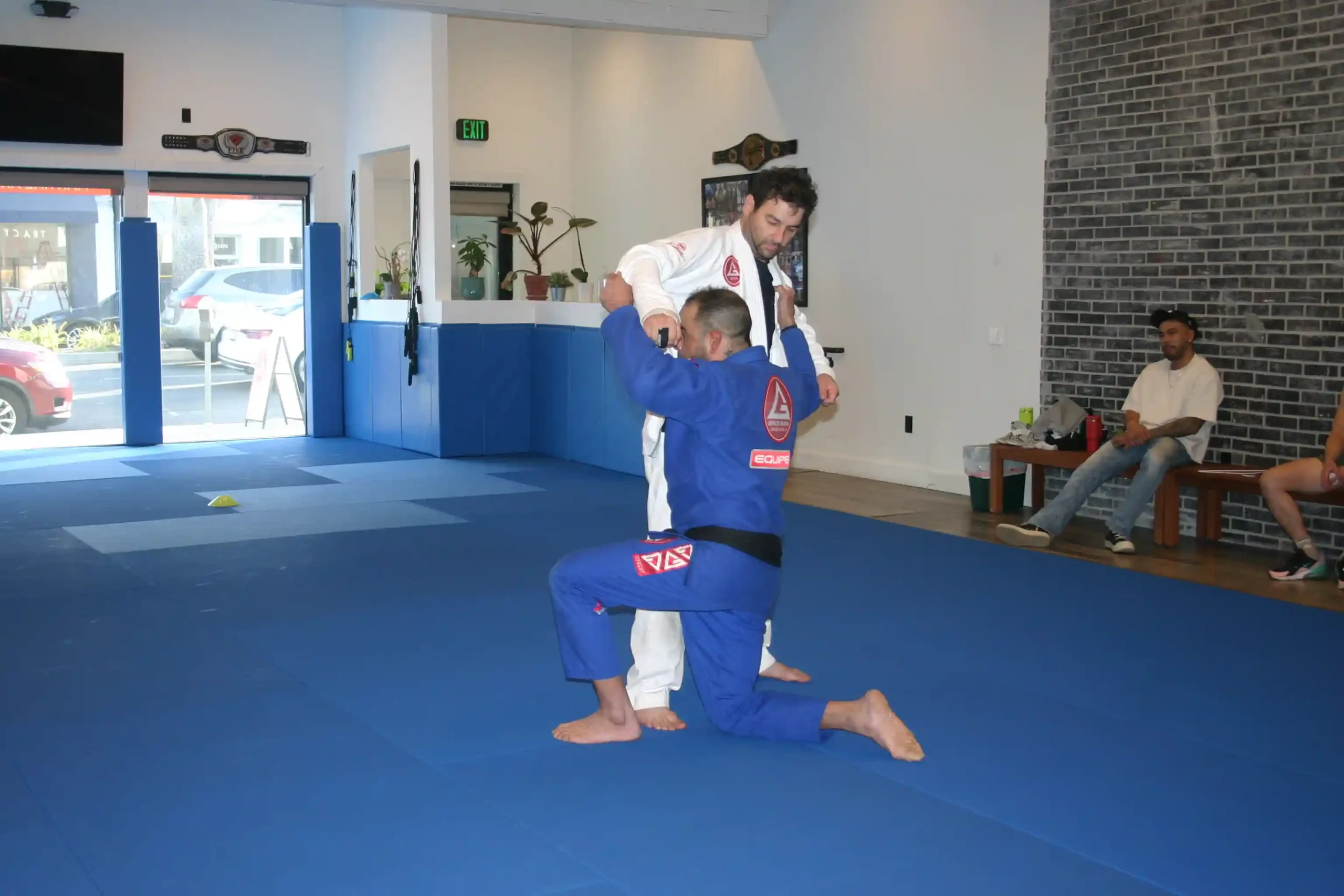If you’re serious about improving your performance on the mats, it’s time to start thinking beyond technique. While drilling and rolling are the foundation of your practice, your physical conditioning plays a massive role in how well and how long you can perform.
Whether you’re training for self-defense, general fitness, or competition, integrating a proper BJJ strength and conditioning program is key to unlocking your full potential. At Gracie Barra Studio City, we work with Brazilian Jiu-Jitsu athletes of all ages and skill levels, from kids to seasoned professionals, to build strong, resilient bodies that support long-term success.
Introduction to Strength and Conditioning for BJJ
It’s a strategic approach to training that goes beyond just lifting weights. This type of programming is designed to develop the physical traits essential for grappling: explosive strength, muscular endurance, mobility, and injury resistance. A well-rounded BJJ strength training routine supports every technique you drill, helping you stay agile, powerful, and ready for whatever your opponent throws at you.
Why Strength and Conditioning Matter in BJJ
Let’s be real, BJJ is demanding. Whether you’re training recreationally or grinding for gold at your next tournament, grappling taxes your body. That’s why BJJ conditioning isn’t a luxury; it’s a necessity.
Here’s why:
- Strength helps you execute and resist submissions with control.
- Endurance lets you keep your pace through multiple rolls or long matches.
- Flexibility and mobility reduce injury risk and improve fluid movement.
- Recovery is faster, meaning more mat time and consistent progress.
For anyone training at a Brazilian Jiu-Jitsu academy in Los Angeles or beyond, a smart S&C routine is a game-changer.
Transform Your Fitness Journey—Book a Free Trial Class!
Benefits of Strength and Conditioning in BJJ
Enhanced Performance:-
Stronger athletes perform techniques with more precision and efficiency. Whether you’re escaping side control or finishing a triangle choke, strength enhances every move.Injury Prevention:-
A well-structured strength and conditioning program for BJJ fighters builds stability in joints and muscles, helping protect against common injuries like sprains, tears, and joint damage.
Improved Endurance
You can’t win the round if you’re gassed in the first two minutes. Conditioning improves your cardiovascular capacity so you can roll longer and smarter.Facts & Statistics: Why This Matters
Backed by data, here’s why strength and conditioning should be part of your training routine:
Benefit | Stat/Insight | Source |
Injury Reduction | 33% fewer injuries in BJJ athletes who use S&C programs | Journal of Sports Science (2023) |
Grip Endurance Increase | 25–40% improvement from targeted grip and pull exercises | Strength & Conditioning Journal |
Rolling Stamina Boost | 20% more stamina after 8 weeks of consistent conditioning work | JSC Research, 2023 |
Improved Recovery | Faster recovery through mobility training and soft tissue care | Sports Rehab Institute |
Performance Under Pressure | Athletes with S&C backgrounds outperform others when fatigued | IBJJF Analysis Report |
Assessing Your Physical Needs
Before jumping into a program, assess your goals. Are you trying to build raw strength, recover from an injury, or boost your endurance between rounds? A great Brazilian Jiu-Jitsu program for personalized strength and conditioning.
Beginners may want to focus on joint stability and general conditioning, while competitors should periodize their training around tournaments. At Gracie Barra Studio City, our coaches help tailor plans to match your training intensity and individual needs.
Key Components of a Strength and Conditioning Program
Strength Training
Compound movements are king when it comes to Brazilian Jiu-Jitsu strength:
- Deadlifts – Build posterior chain power and grip strength.
- Squats – Enhance core strength, hip mobility, and drive from the base.
- Bench Press & Overhead Press – Strengthen pushing power for top control and framing.
- Pull-Ups & Rows – Boost pulling strength for guard retention and submissions.
Cardiovascular Conditioning
Developing gas tank capacity is crucial for maintaining pressure:
- High-Intensity Interval Training (HIIT) – Simulates the pace of rolling with bursts of work and recovery.
- Circuit Training – Combines strength and cardio for efficient workouts.
- Sport-Specific Drills – Movement drills that mimic guard passes, sprawls, and positional transitions.
Flexibility and Mobility
Don’t sleep on flexibility it helps prevent injuries and enhances performance:
- Dynamic Stretching – Pre-training mobility to prime muscles.
- Static Stretching – Post-training cooldown for recovery.
- Yoga or Pilates – Develop core control, breath work, and movement efficiency.
Strength and Conditioning Exercises
Here are some go-to movements we recommend at our Brazilian Jiu-Jitsu academy:
- Bent-Over Rows – Excellent for grip and back development.
- Hip Thrusts – Target the glutes and help with bridging and base movement.
- Kettlebell Swings – Build explosive hip power and conditioning.
- Medicine Ball Slams – Improves core explosiveness and upper-body endurance.
Step Onto the Mat and Start Your BJJ Adventure!
Monitoring Progress and Adjusting the Program
A smart training program evolves. Here’s how to measure success:
- Strength Gains – Track PRs in key lifts.
- Endurance Levels – Monitor roll duration, rest needs, and energy levels.
- Flexibility – Regular mobility checks in hips, shoulders, and spine.
Regular reassessment helps adjust your plan to match training load, goals, and competition seasons.
Common Mistakes to Avoid
Neglecting Technique – S&C supports your Jiu-Jitsu it doesn’t replace it. Always prioritize mat time.
Ignoring Recovery – Mobility, work, sleep, and hydration are part of the plan. Don’t skip them.
Conclusion
Whether you’re a weekend warrior, a parent helping your child grow through martial arts, or a competitor chasing gold, strength and conditioning will elevate your performance.
With the right plan, you’ll not only train harder, you’ll train smarter. At Gracie Barra Studio City, we support Brazilian Jiu-Jitsu Los Angeles athletes with personalized programs that complement their journey on the mats.
If you’re looking to level up, ask your coach how you can integrate a strength and conditioning program for BJJ fighters into your weekly routine.
Frequently Asked Questions
Two to three sessions per week are ideal for most BJJ athletes, depending on your training goals, schedule, and recovery needs.
Not if balanced properly—pair strength training with regular mobility work to stay flexible, agile, and smooth in your movements on the mat.
No. BJJ athletes benefit more from functional strength, mobility, and endurance-focused exercises rather than maximum-effort, single-rep lifts like powerlifters do.
Gaining excessive muscle mass is unlikely unless you’re intentionally training and eating for it. Strength training typically enhances athleticism, not size.
Yes, but with a focus on body control, injury prevention, and foundational movements before progressing into heavy or complex strength work.
Compound movements like deadlifts, squats, pull-ups, and rows build strength in key areas used constantly during rolls, transitions, and submissions.
